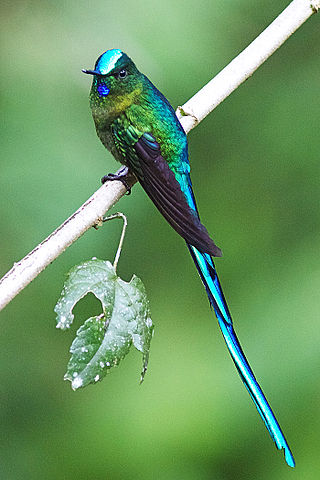
The giant white-tailed rat is an Australian rodent native to tropical rainforest of north Queensland, with subspecies occurring in New Guinea and the Aru Islands. It is one of the largest rodents in Australia, reaching up to 1 kg in weight. It is grey-brown above, cream to white below, and has a long, naked tail of which the distal section is white.

Uromys is a genus of rodents found in Melanesia and Australia. They are known as the giant naked-tailed rats. There are eleven species in the genus, with the most recent described in 2017.

Hoffmann's rat is a species of rodent in the family Muridae. It is found only in Indonesia, and is located throughout Sulawesi, as well as Malenge island in the Togian Islands.
The Mentawai rat is a species of rodent in the family Muridae. It is found only in the Mentawai Islands of Indonesia, on the islands of Siberut, Sipora, Pagai Utara, and Pagai Selatan.
The Andaman rat is a species of rodent in the family Muridae. It is endemic to the Andaman Islands, where it has been recorded on Henry Lawrence Island, South Andaman, and Middle Andaman. It is a nocturnal species that lives in tropical evergreen forests from sea level to 200 m (660 ft) above sea level.
The giant naked-tailed rat is a species of rodent in the family Muridae. It is found in West Papua, Indonesia and Papua New Guinea. It lives in tropical forests, wetlands, and in degraded forests.
The masked white-tailed rat is a species of rodent in the family Muridae. It is found only in Australia, in north-east Queensland.
The emperor rat is a large species of rodent in the family Muridae. It is endemic to the island of Guadalcanal in the Solomon Islands. It is classified as critically endangered by the IUCN but may already be extinct.
The Bismarck giant rat is a species of rodent in the family Muridae. It is endemic to the island of New Britain, Papua New Guinea.
The Guadalcanal rat is a species of rodent in the family Muridae. It was found only in the Solomon Islands. Since this species was collected between 1886 and 1888 it has not been seen again. It is possibly extinct.

The long-tailed sylph is a species of hummingbird in the "coquettes", tribe Lesbiini of subfamily Lesbiinae. It is found in Bolivia, Colombia, Ecuador, Peru, and Venezuela.
The king rat is a large species of rodent in the family Muridae. It is endemic to the island of Guadalcanal in the Solomon Islands. Like the two other species of rodent in Guadalcanal, it is placed in the genus Uromys. It lives in trees and is larger than Uromys porculus but smaller than Uromys imperator.

The Biak–Numfoor rain forests is a tropical moist forest ecoregion in Indonesia. The ecoregion covers the islands of Biak, Supiori, Numfoor, and several smaller islands, which lie in Cenderawasih Bay north of Yapen and New Guinea.
The Biak Island uromys or Biak giant rat is a species of rodent in the family Muridae. It is known only from a single specimen collected on the Indonesian island of Biak.
The Great Key Island giant rat, or Great Key Island uromys is a species of rodent in the family Muridae. It is known only from Great Key Island, Indonesia.
The Vangunu giant rat, locally known as the vika, is a giant arboreal species of rodent in the family Muridae. The rat was discovered in the island of Vangunu in the Solomon Islands in 2015, after years of searching based on local stories, and described in 2017. It was identified as a new species on the basis of its skull, skeleton and a detailed DNA analysis. The single individual initially collected from a felled tree measured 46 cm long, weighed between 0.5 and 1.0 kg and had orange-brown fur. Its diet is believed to include thick-shelled nuts like ngali nuts and coconuts, and probably fruits. The species is likely to be designated critically endangered, due to the small amount of forest habitat remaining on the island and ongoing logging.

Hydromyini is a very large, diverse tribe of muroid rodents in the subfamily Murinae. They are the dominant native rodents in Australasia and one of only two native rodent groups there, the other being the R. fuscipes group of the genus Rattus in the tribe Rattini. They are also found in parts of Southeast Asia.




